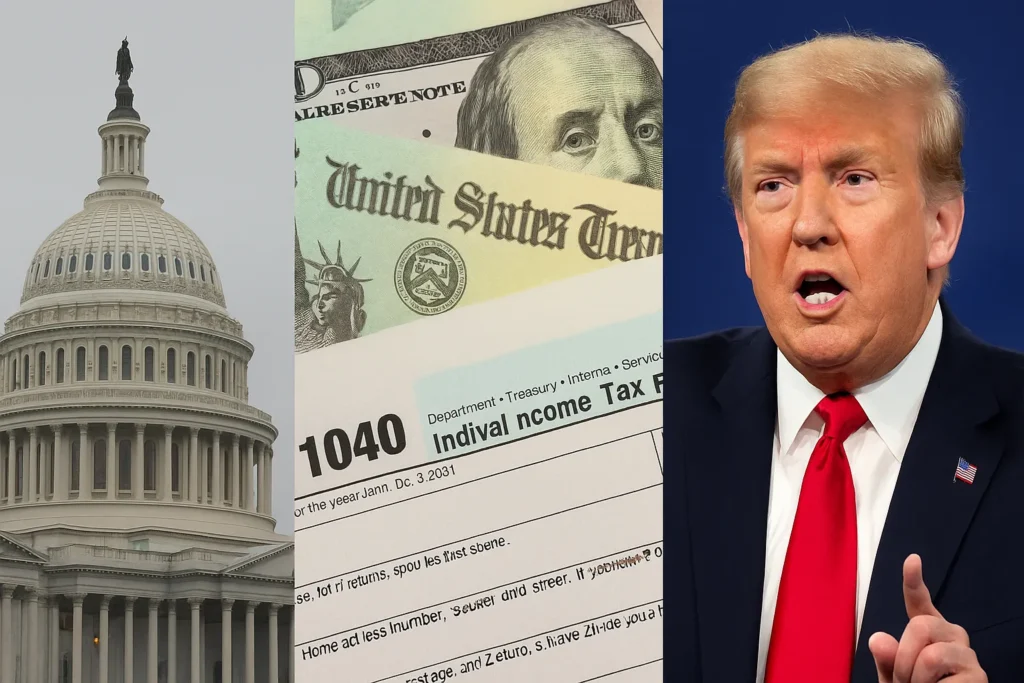House Republicans are nearing a deal to raise the SALT cap for blue-state taxpayers as Trump pushes for unity on a sweeping tax and spending bill.
House GOP leaders are close to a deal with New York Republicans on expanding the SALT tax deduction. The plan, part of Trump’s major budget push, faces resistance from conservatives over spending and policy differences, including Medicaid and immigration reforms.
House GOP Eyes SALT Cap Expansion in Deal with New York Republicans
Republican leaders in the House are moving closer to a compromise with a group of moderate New York Republicans on a key issue: raising the cap on State and Local Tax (SALT) deductions. This issue has long been a priority for blue-state GOP members, especially from high-tax areas.
Under the current proposal:
• Individuals earning less than $500,000 annually could see their SALT deduction limit increase from $10,000 to $40,000.
• Those earning between $500,000 and $800,000 would benefit from a sliding-scale deduction above $40,000.
• Salaries over $800,000 would maintain the pre-existing $10,000 SALT cap.
The change would last 10 years with significant tax relief to middle- to upper-middle-income families in New York, New Jersey, and California.
But it faced opposition from conservative Republicans, who state that any SALT cap increase is for wealthier Americans and it undercuts the federal spending program.
They view the SALT deduction as a subsidy for Democratic-run states and demand deeper cuts instead.
Trump’s Warning to GOP Holdouts
Former President Donald Trump has inserted himself into the debate, warning Republican lawmakers that obstructing the party’s legislative agenda could result in political consequences.
During a closed-door meeting on Tuesday, Trump urged fiscal conservatives to drop their objections to expanding Medicaid cuts and tax relief for blue-state voters. He stressed unity around what he calls a “One Big, Beautiful Bill”.
Trump’s mega-policy bill aims to fast-track major changes in tax, spending, border security, and welfare programs through a narrowly divided House.

What’s in Trump’s “Big Beautiful Bill”?
The bill, officially titled the “One Big, Beautiful Bill Act”, fulfills many of Trump’s campaign promises and includes:
• Extension of the 2017 Trump tax cuts
• No federal taxes on tips or overtime pay
• $50 billion for revamping the border wall
• $150 billion in defense spending, including missile defense and naval shipbuilding
• $230 billion in cuts to SNAP (food aid) over 10 years
• Revised Medicaid eligibility and work requirements
Medicaid Changes Explained
The bill introduces significant Medicaid reforms, including:
• Mandatory work requirements for able-bodied adults (ages 19–64) without dependents, requiring 80 hours/month starting in 2029, though conservatives may push to begin sooner.
• More rigorous income verification and semiannual eligibility re-determinations.
• No coverage for undocumented immigrants.
• Higher co-pays for individuals earning above $15,500 per year.
• Bigger oversight to minimize “double-dipping” across states.
The Congressional Budget Office (CBO) estimates 8 million people could lose some level of Medicaid coverage in the proposed changes.
SNAP Cuts at a Glance
The bill also proposes:
• $230 billion in SNAP (formerly food stamps) cuts over 10 years.
• Harsher eligibility and work requirements.
• Fewer Americans receiving monthly food help.
⚠️ What Happens Next?
Negotiations are still underway; with Republicans still working on the final details of the bill. The Senate is expected to propose major amendments, and the CBO is still reviewing the legislation’s overall fiscal impact.
The outcome will determine not just the fate of tax policy and social programs but also Trump’s influence over the GOP and the party’s ability to present a unified front ahead of the 2024 elections.
Related Topic

